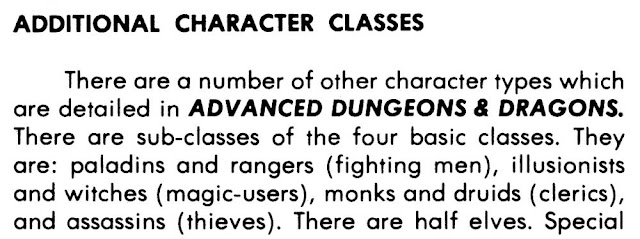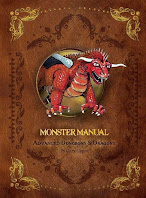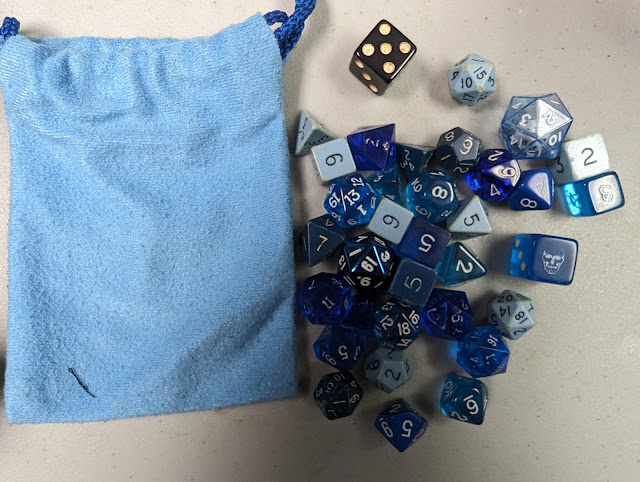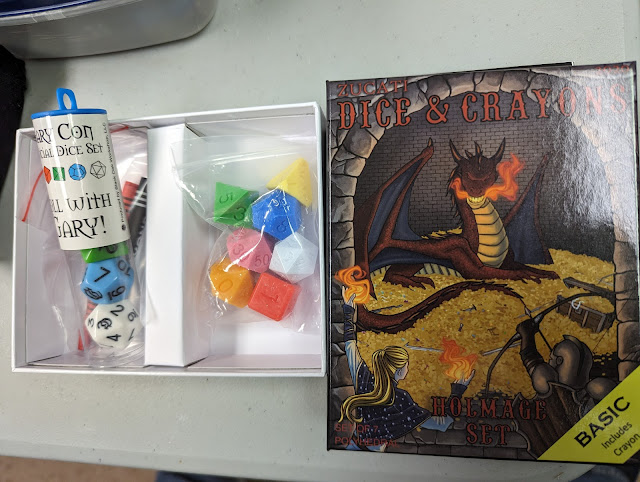Ok a bit of a change for the last post of the A to Z of Dungeons & Dragons today. First off, I want to thank everyone who came by, commented, and shared my links. You all are the reason I love doing this.
So, for that, I want to give back to you all.
If you have been involved in academia in the past few years you likely know about the infamous "Z-Library." This is a "shadow library" (which admittedly sounds cool) that gives you access to 1,000s of books. The legality of this, though, is on the questionable side to outright piracy. So no, I will not be linking out to it.
But what I can do for you, my readers, is provide you with a 100% free and 100% legal, and in many cases with the author's express permission, access to books so you can play or discover Dungeons & Dragons on your own: A Dungeons & Dragons Z-Library.
Again, all these titles are free, 100% legal, and 100% safe for you to download and begin playing. Often all you will need is pencil, paper and some dice.
Don't have mult-sided polyhedral dice? No worries, Google's Dice Roller has you covered.
Dungeons & Dragons for Free
D&D Beyond has a portal where you can read the rules and create (up to 6) characters for free. This is for the current edition of 5e.
IF you don't mind a little work and don't care about art, the entire D&D 5e system has been released to the Creative Commons. It is free to grab and use as you like.
DriveThruRPG has many free items from D&D's current publisher, Wizards of the Coast, for free. In particular, they have the following for older editions:
- Into the Darkness (3.0)
- Monster Slayers: The Heroes of Hesiod (4e lite) Great for kids 10 and under!
- D&D RPG Starter Set Quickstart (4e)
- H1 Keep on the Shadowfell & Quick-Start Rules (4e)
Other D&D-like Games for Free
These games are often referred to as "Retro Clones," and they emulate older forms of D&D. While they are not 100% D&D, they are close, and ALL offer the same sorts of experiences. You could play one of these, call it D&D, and everyone would be happy.
Since I have been talking about the various editions of D&D all month long, I will organize these Clones by the edition they are most similar to. Some are full games, and others will be "quick starts," which are usually just an introduction to the game.
Note: This is not everything, but it is many free ones. Many of these also have paid versions as well.
Original Edition
These games mimic the original Edition of the D&D game.
Delving Deeper. This game mimics the original three books of OD&D. It is free from it's website and from DriveThruRPG.
Iron Falcon. This game mimics OD&D and its first supplement, which made the game the one we recognize today. Iron Falcon comes to us from the same team that gave us Basic Fantasy, so everything is 100% free. The print books are at cost. In terms of giving back to the community, none is better than Basic Fantasy/Iron Falcon. I like to support them for these reasons alone.
White Box: Fantastic Medieval Adventure Game. Based on the Swords & Wizardry rules. Not exactly OD&D but very close.
Dungeon Crawl Classics. This is an odd one. It has the feel of OD&D, some of the mechanics of Basic D&D, and the game play of AD&D. All with the grit turned up to 11.
Basic Edition
These games are most like the Basic-era games, so Holmes, Moldvay, and Mentzer versions of D&D Basic.
Basic Fantasy. This is the gold standard when it comes to free content and community. It is most similar to Basic D&D, but not Rules as Written, but more like how we actually played it back in 1980-2. EVERYTHING for it is free. The print books are sold at cost. There is a ton of material for it, and it really is the best game for learning to play a Basic (and basic) D&D game. I highly recommend it.
BLUEHOLME™ Prentice Rules. This game very specifically was designed to emulate the John Eric Holmes edited version of the D&D Basic rules. So great for that 1977 to 1979 gaming experience. This version is free, if you like it then there is the BLUEHOLME™ Journeymanne Rules for $10. I reviewed them both here.
Dark Dungeons and Dark Dungeons X. These books emulate the D&D Rules Cyclopedia, the Basic era RPG that covered the Basic, Expert, Companion, and Masters rules from level 1 to level 36! The first book is free, and DDX is "Pay What You Want" with print options. The name is an homage to the notorious anti-D&D Jack Chick tract.
Holmes77. A free RPG based on the Holmes version of Basic. I don't know a lot about it, really.
Labyrinth Lord. One of the premier Basic D&D clones with a ton of support.
Mazes & Perils RPG. Another Holmes-influenced retro clone. I reviewed it here.
Old-School Essentials Basic Rules. Old-School Essentials is one of the current favorites of the Retro-Clone games. It is a pretty faithful replication of the Moldvay Basic / Cook-Marsh Expert rules from 1981. The OSE rules have some fantastic production values, and these free rules are a great example.
Shadowdark RPG Quickstart Set. The newest darling of the Retro-Clone scene. It is a combination of Basic and 5th edition D&D. This one might easier to find a game going on than most of the others.
Advanced Dungeons & Dragons 1st Edition
OSRIC. The Old School Reference & Index Compilation was one of the very first retro-clones produced and was one of the test beds of the concept of a clone game. It is the Advanced Dungeons & Dragons rules but reorganized. Designed as a tool to publish new AD&D 1st Ed rules, it does work as a game.
Castles & Crusades Players Handbook. This is the player's book for the Castles & Crusades RPG. It is a presentation of the D&D 3rd edition rules designed to play like the AD&D 1st edition rules.
Advanced Dungeons & Dragons 2nd Edition
For Gold & Glory 2e Core Rules. A good emulation of the AD&D 2nd Edition game.
Dungeons & Dragons 3rd Edition
3.5 d20 SRD. The D&D 3.5 System Reference Document is the rawest version of the D&D 3.x rules. No thrills, no fluff, but everything you need to play a D&D 3 game.
Pathfinder d20 SRD. Same as the SRD above, but with the added Pathfinder material.
NOTE: The SRDs are not games per se, but they are all the rules. They do not have art, no explanations, no examples. Just the rules.
--
I would be remiss if I didn't at least promote my own game here.
Night Shift: Veterans of the Supernatural Wars is a modern supernatural urban fantasy role-playing game. If you liked shows like Supernatural, Buffy the Vampire Slayer, and Vampire Diaries as well as Friday the 13th the series,Tales from the Darkside, and horror movies, then this is the game for you.
AND you can try it out (up to 4th level) for free!
Night Shift: Veterans of the Supernatural Wars Quick Start Kit
The title is Pay What You Want, but I urge you to give it a try.
--
Regardless of which one you choose, and you can choose them all, the most important thing when playing any role-playing game is to remember to have fun.
And that is it for another A to Z Challenge! I hope you enjoyed my rather geeky exploration into the last 50 years of Dungeons & Dragons. Come back all year long and I will be doing more of the same. May will be Sci-Fi month so I am going to talk about sci-fi RPGs related to Dungeons & Dragons. October is my huge Horror month, so I am going to talk Ravenloft. June I typically save for Basic-era D&D (B/X and BECMI) but not sure yet.
So come back all year long!



.jpg)


































